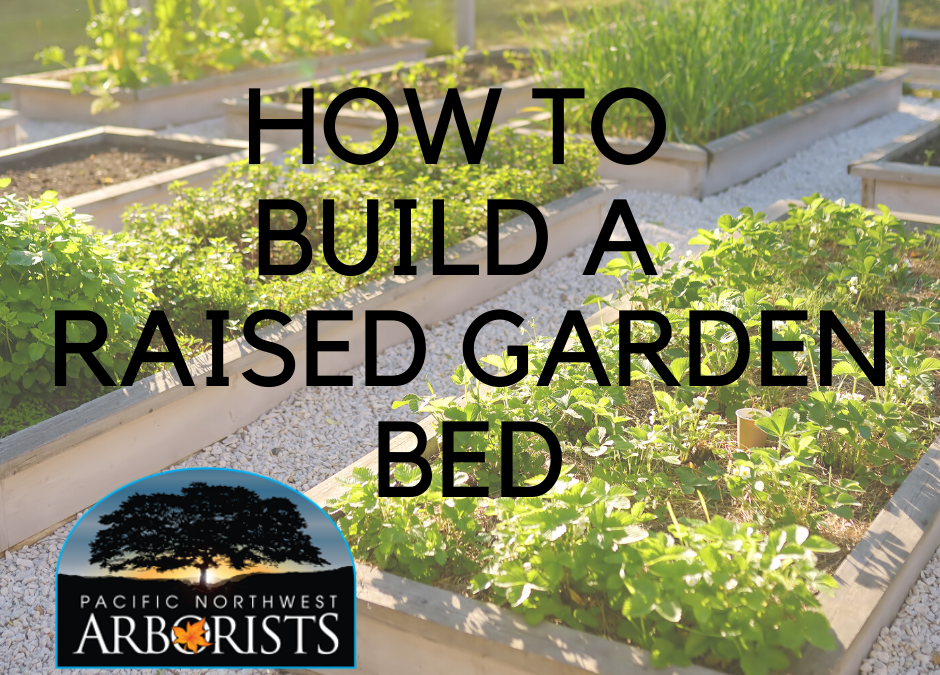HOW TO BUILD A RAISED GARDEN BED
Struggling to establish an attractive and suitable garden in your yard, or deciding on the right raised garden bed materials? Does the idea of traditional back-breaking gardening deterring you from following through with growing your own plants? A raised garden bed may be the right solution! Although planters and flower pots are great ways to garden, raised garden beds are the best way to grow fresh vegetables, herbs, and crowds of seasonal flowers in your yard.
Ideal for small patios, apartments, or yards, raised garden beds are the most manageable way to grow your plants. The height of a raised garden bed is typically anywhere at ground level, to about three feet off the ground. Raised gardening beds eliminate bending over while gardening, and is perfect for gardeners with mobility and back strain issues.
Soil is usually the problem when it comes to having a successful garden; however, raised garden beds make it easier to control the soil and defend against pests. Options for the type of material you use for your garden bed structure include; cedar, concrete, and galvanized aluminum. You can also choose if you prefer to use store bought soil or make your own compost.
In this article you will learn how to build your own ground level raised garden bed, and upgrade recipes in your kitchen with the freshly grown ingredients from your backyard!
RAISED GARDEN BED MATERIALS NEEDED
-mallet
-hardware (or pre-packaged raised bed garden assembly kit)
-soil
-landscape fabric
-gardening trowel
-drill (if using wood)
-pressure treated wood or bricks
SELECT LOCATION AND ASSEMBLE GARDEN BED
If you truly want to DIY this project, you can follow this video to build your raised garden bed from scratch. Most home improvement stores will carry a raised garden bed assembly kit, like this one from the Home Depot.
First, you’ll want to choose a flat area that receives a lot of sunlight for the placement of your raised garden bed. You don’t have to take into consideration the condition of the soil, that will be covered with landscape fabric and new soil.
Once you have selected the area you want to place your raised garden bed, you can assemble the kit. Tip if using pressure treated wood: make sure to drill pilot holes first, this will help keep your wood correctly aligned, and avoid splitting.
LINE WITH LANDSCAPE FABRIC
Making sure to cover the entire area, line the bottom of the bed with landscape fabric. This porous barrier between the soil in the bed and the soil in your yard helps keep weeds and grass from growing in the bed, while also allowing water to pass through for drainage.
ADD SOIL
Whatever plant you choose to grow in your garden bed, make sure you choose the soil the best suits the plants for optimal growth. Be sure to add enough soil so that it almost fills the entire bed. Check your soil’s PH levels to ensure it’s compatible with the kind of plants you want to grow in them.
ADD PLANTS AND SEEDS
This part is pretty familiar to gardeners; dig a big enough hole so that plants roots are covered and the soil is secure around the stems, and sprinkle and cover seeds appropriately. Water and conduct regular maintenance. As the plants grow, use any supporting or prop tools necessary such as plant stakes.
Can’t decide what to grow in your garden? Choosing to grow what your appetite typically craves is a great way to determine a theme to your garden. This way, you have all the fresh ingredients you need to make your favorite meals, right in your backyard!
Here are some themed garden suggestions:
Salsa Garden:
Oregano, cilantro, red onions, serrano, fresno chili or chile de arbol pepper, Roma tomato (caged), and tomatillos.
Salad Garden:
Carrots, radishes, onions, lettuce, baby spinach, plant peppers (staked) and tomatoes (caged).
Kitchen Herb Garden:
Oregano, cilantro, parsley, thyme, sage, rosemary, chives, and basil.
Once your herbs are mature be sure to harvest a little every few days to keep the plants producing.
Keep running plants in mind, like mint. These types of plants are fantastic for the kitchen, but they can crowd other plants and take over an entire garden bed. Your best option is to keep these plants in their own container or bed.
Don’t just stop there! Garden beds make for a wonderful home for flowers or bulbs. Alternating rows of seasonal flowers is a great way to ensure you have something blooming all year around.

